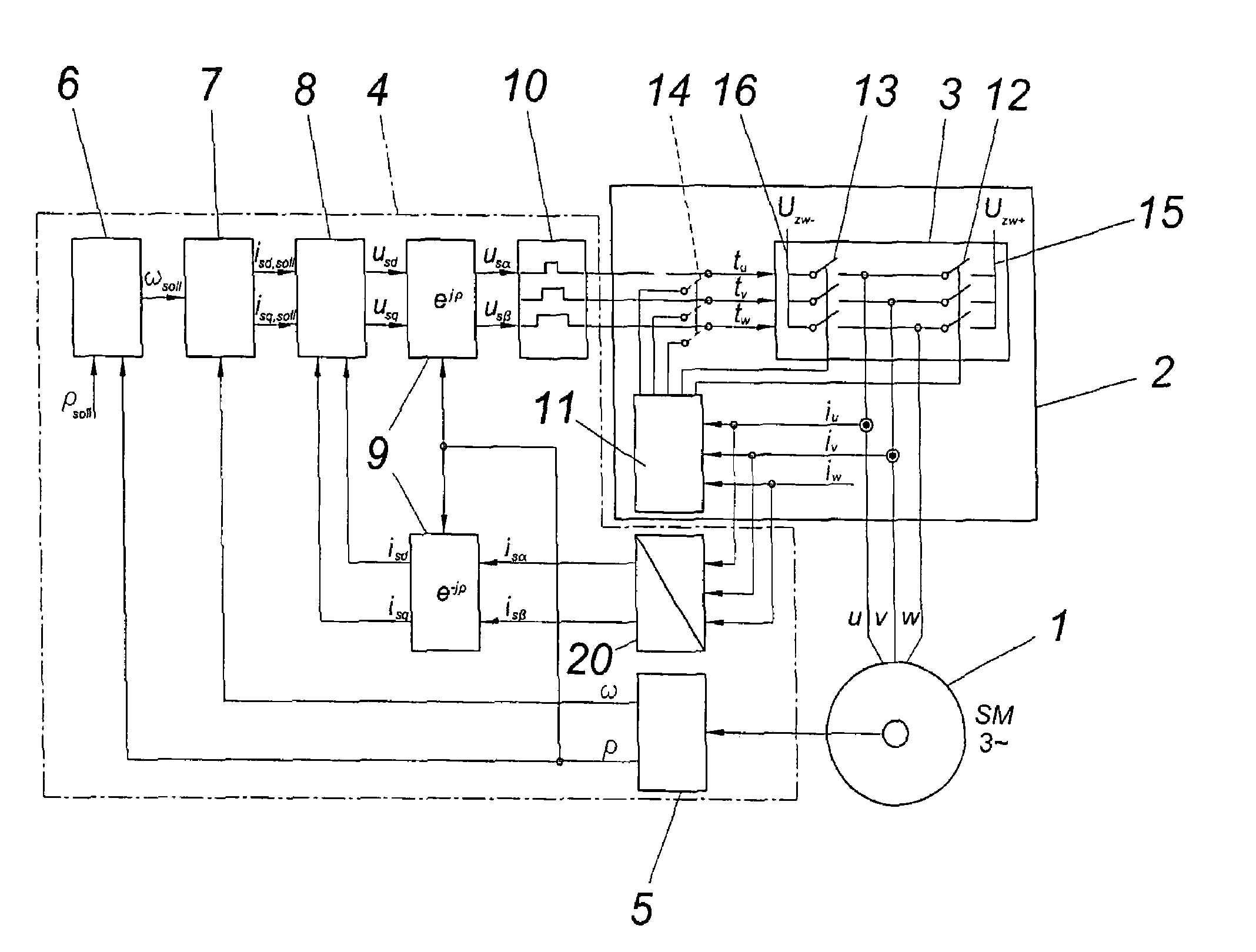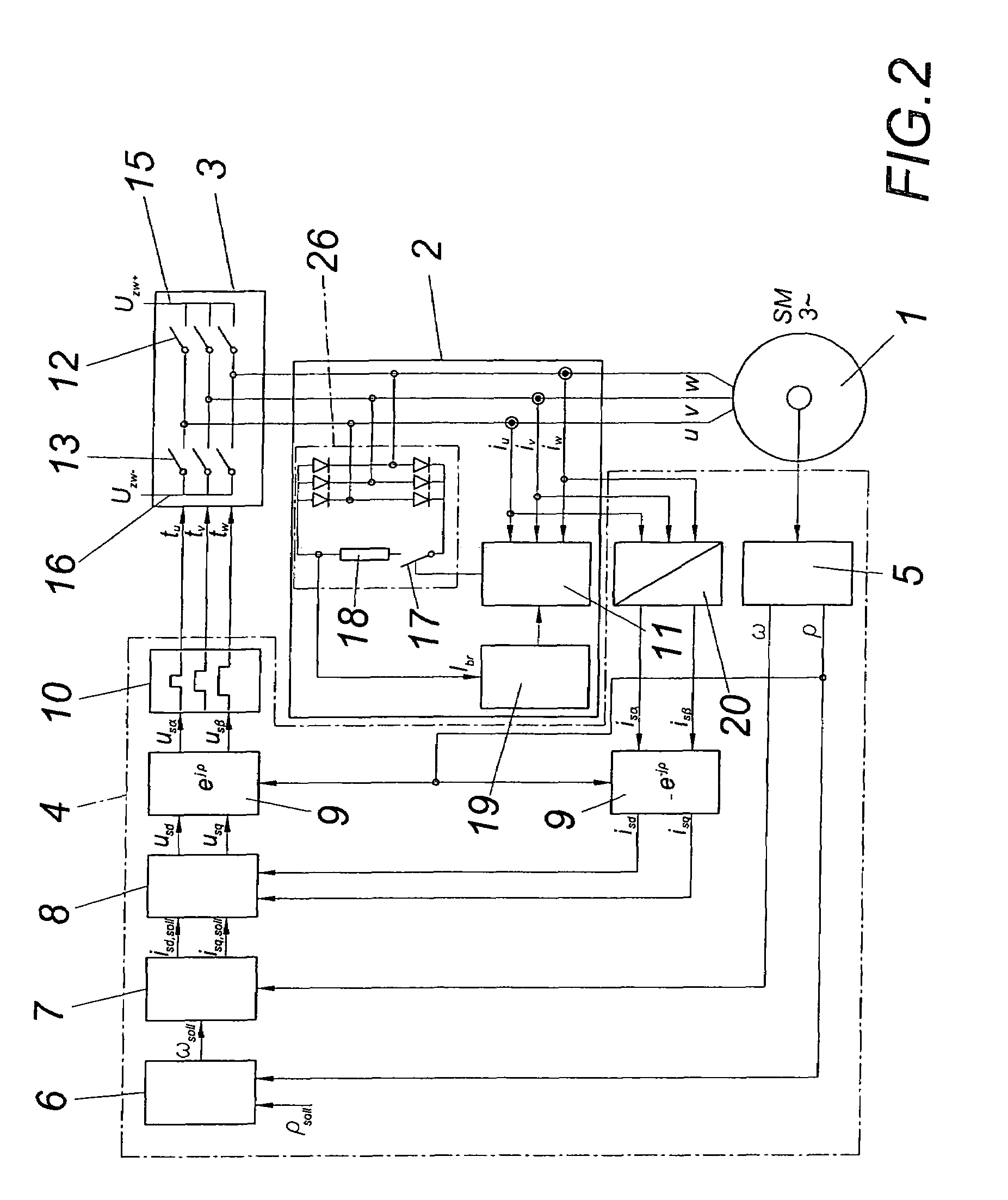Apparatus for braking a synchronous machine
a synchronous machine and apparatus technology, applied in the direction of dc motor stoppers, ac motor stoppers, stopping arrangements, etc., can solve the problems of reducing the service life of the synchronous machine, and requiring additional components. the effect of reducing the construction complexity, improving the thermal loading of the power breakers, and simple way
- Summary
- Abstract
- Description
- Claims
- Application Information
AI Technical Summary
Benefits of technology
Problems solved by technology
Method used
Image
Examples
Embodiment Construction
[0016]A permanent-field synchronous machine 1 comprises armature windings u, v, w which can be shorted via a braking device 2. A power converter 3 is provided for the normal operation of the synchronous machine 1, which converter is triggered by way of a triggering unit 4 in the usual manner.
[0017]The triggering unit 4 comprises, among other things, a rotational angle and rotational speed transducer 5, a positional controller 6, a speed controller 7, a current controller 8 and converters for mathematical transformations 9, a space vector modulation 10 and a two of three converter 20.
[0018]According to the embodiment according to FIG. 1, the braking device 2 comprises a torque controller 11 which shorts the power breaker elements 12 and 13 in a preferably alternating manner in the case of a braking. Prior to this, it is necessary to prevent a triggering of the power breakers 12 and 13 by the triggering unit 4, for which purpose the switches 14 are opened in this case. For the purpose...
PUM
 Login to View More
Login to View More Abstract
Description
Claims
Application Information
 Login to View More
Login to View More - R&D
- Intellectual Property
- Life Sciences
- Materials
- Tech Scout
- Unparalleled Data Quality
- Higher Quality Content
- 60% Fewer Hallucinations
Browse by: Latest US Patents, China's latest patents, Technical Efficacy Thesaurus, Application Domain, Technology Topic, Popular Technical Reports.
© 2025 PatSnap. All rights reserved.Legal|Privacy policy|Modern Slavery Act Transparency Statement|Sitemap|About US| Contact US: help@patsnap.com



